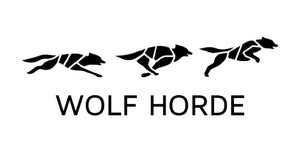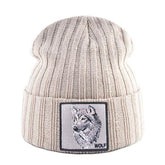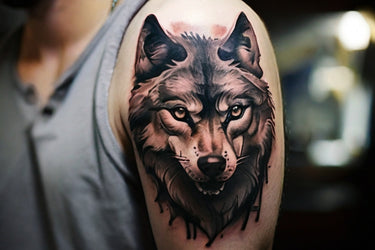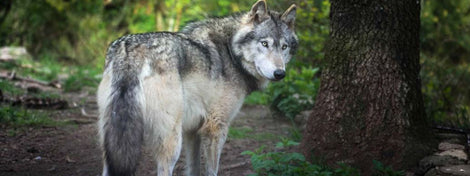WHAT DOES FENRIR SYMBOLIZE IN NORSE MYTHOLOGY: A POWERFUL SYMBOL
Uncovering Meanings: What Does Fenrir Symbolize Explained
Wrapped in mystery and enigma, the story of Fenrir, the gigantic wolf in Norse mythology, has captivated the minds of scholars, artists, and individuals seeking wisdom from ancient tales. As we delve deep into the symbolism of Fenrir in mythology, we uncover a multifaceted character that embodies not only the destructive forces but also elements of courage, strength, and liberation. Fenrir's symbolic representation transcends the scope of mere binaries of good and evil, presenting a mythological figure that continues to resonate powerfully across time and cultures. Join us on an enthralling journey that unveils the secrets behind this great Norse mythological beast and gives voice to its rich symbolism.
Key Takeaways
- Fenrir symbolizes a complex array of meanings, including strength, chaos, and the natural forces.
- The monstrous wolf is both a feared and revered figure in Norse mythology, reflecting the multifaceted nature of its symbolism.
- Fenrir's role within the Nordic pantheon highlights the interconnectedness of the deities and the complexities of their relationships.
- The story of Fenrir touches upon themes such as fear, betrayal, and destiny, adding depth and wisdom to its narrative.
- Contemporary interpretations of Fenrir's symbolism in art, literature, and modern Paganism reveal its continued significance and relevance today.
- Fenrir holds a unique place in Norse iconography, providing endless inspiration for artistic and literary works.
- Delving into the meaning of Fenrir can offer valuable insights and understanding about the human experience and the timeless power of ancient mythological symbols.
Introduction to Fenrir: The Monstrous Wolf of Norse Mythology
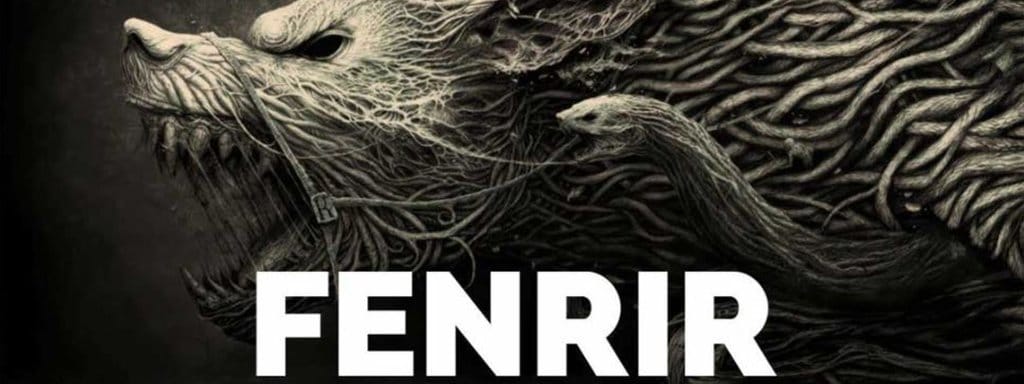
Among the many captivating figures in Norse mythology, Fenrir stands out as a powerful and feared creature. Often referred to as the monstrous wolf, Fenrir has been etched into history through its mythological ties and association with cosmic disasters. A deeper understanding of Fenrir's origins and role within the larger Norse narrative establishes the foundation for grasping its significance and symbolism across time.
Fenrir is an essential figure in Norse mythology and often depicted as a god of destruction, chaos, and the natural forces. Descended from the trickster god Loki and the giantess Angrboda, this monstrous wolf was feared for its immense size, insatiable appetite, and unparalleled ferocity. The Norse gods, aware of the prophecies foretelling Fenrir's role in their destruction, eventually made attempts to bind and restrain the wolf.
Many aspects of Fenrir's life story are open to interpretation, including its nature, motivations, and ultimate role within the mythological pantheon. The multifaceted symbolism surrounding Fenrir stems from its unique blend of characteristics, which range from raw power and dominion over the natural world to the harrowing reckoning of an ominous prophecy.
"Fenrir roams the wilderness, its eyes burning with the fires of destruction."
While Fenrir is often thought of as a malevolent force, there are numerous instances in Norse mythology that exemplify the complex nature of this great wolf. The following themes will be explored as they relate to Fenrir:
- Origins and lineage
- Symbolism of the monstrous wolf
- Role in the Ragnarok prophecy
- Nature and understanding of Fenrir's actions.
Through examining these aspects of Fenrir's story, the extent of its influence and the depth of its cultural significance within Norse mythology become increasingly clear.
| Aspect | Description |
|---|---|
| Origins and Lineage | Fenrir is born to Loki, a shape-shifting Norse trickster god, and Angrboda, a giantess harbinger of doom. |
| Symbolism of the Monstrous Wolf | Representations of Fenrir are heavily grounded in themes of immense power, destructive force, and the inevitability of chaos. |
| Role in the Ragnarok Prophecy | Fenrir's role in the end of the world is prophesized, with the wolf eventually battling the chief Norse god, Odin, in a cataclysmic confrontation. |
| Nature and Understanding of Fenrir's Actions | Fenrir's motivations and actions throughout Norse mythology are nuanced, with the debate surrounding its moral inclinations remaining open for interpretation. |
As we delve further into the complex character of Fenrir, the reader is encouraged to form their own understanding of this enigmatic figure from Norse mythology. The meaning behind Fenrir's role and actions in the intertwining web of mythological stories is open to analysis and reflection, providing a fascinating insight into the enduring relevance of this ancient creature.

The Birth and Family of Fenrir: Unveiling Norse Pantheon Relationships
As the offspring of the trickster god Loki and the giantess Angrboða, Fenrir boasts a unique and complex lineage. The fearsome wolf's birth ties it intricately to the Norse pantheon's web of relationships, which are essential to understanding its role in the grand narrative of Norse mythology. Additionally, Fenrir has two siblings: Jormungandr the world serpent, and Hel, the ruler of the eponymous realm of the dead.
Fenrir's connection to the giants through Angrboða contributed to the overall tension and strife between the gods and the giants or Jötunn. While other deities in the Norse pantheon were typically related by blood, marriage, or strategic alliances, the offspring of Loki and Angrboða stand apart as a trio of powerful, monstrous beings, setting the stage for their unique roles in the overarching mythology.
"Fenrir, Jormungandr, and Hel - siblings born of mischief and chaos, destined to challenge the very foundations of the Norse cosmos"
As each sibling embodies a formidable aspect of nature or the cosmos, their respective roles in various myths establish them as formidable antagonists capable of influencing the fate of the gods. As such, the family ties between Fenrir and its siblings provide insight into the intricate dynamics within the Norse pantheon and the implications they hold for their associates and rivals. To illustrate this further, let's examine the siblings' godly relations:
| Relation | Fenrir | Jormungandr | Hel |
|---|---|---|---|
| Father | Loki | Loki | Loki |
| Mother | Angrboða | Angrboða | Angrboða |
| Famous Associations | Odin, Tyr | Thor | Odin, Baldr |
| Roles in Norse Mythology | Monstrous wolf, chaos bringer, symbol of destruction | World serpent, encircling the realm, symbol of eternity | Ruler of the realm of the dead, guardian of the souls, symbol of mortality |
Together, Fenrir, Jormungandr, and Hel symbolize the threat posed by chaotic phenomena and the ever-looming possibility of divine downfall. By exploring their origins and positioning within the Norse pantheon, one can better appreciate the intricate relationships interweaving the myriad deities and creatures that populate this vibrant mythological world.
Fenrir in the Ragnarok Prophecy: A Harbinger of Destruction
The Ragnarok prophecy in Norse mythology is a foretelling of the end of the world and an apocalyptic series of events that will bring about the demise of gods and mortals alike. It is in this cataclysmic scenario that Fenrir reveals its pivotal role, emerging as a harbinger of destruction.
"In the outskirts of the war, came the great wolf; whose like was never seen before, nor will be seen again. His very name spread the blast of fear."
Fenrir's role in the Ragnarok prophecy begins with its escape from the magical binds that confined it. Once set loose, the monstrous wolf is destined to bring about massive destruction and chaos. Ultimately, the prophecy foresees Fenrir confronting and devouring Odin, one of the most powerful gods in the Norse pantheon, which in turn leads to other apocalyptic end of the world events.
| Event | Description | The Role of Fenrir |
|---|---|---|
| The Escape of Fenrir | Fenrir breaks free from the bonds placed upon it by the gods. | Signifies the beginning of Ragnarok and initiates the apocalyptic events. |
| Devouring of Odin | Fenrir confronts and devours Odin, the Allfather. | Creates chaos and madness among the gods, leading to the great battle. |
| The Death of Fenrir | Fenrir is ultimately killed by Odin's son, Víðarr. | Fulfills the prophecy and represents the fateful end of the monstrous wolf. |
As a central figure in the Ragnarok prophecy, Fenrir's association with destruction and chaos is impossible to overlook. However, it is important to consider the implications this has on the creature's character. While Fenrir's actions in the prophecy evidently bring about great loss and devastation, it can be argued that the wolf is an agent of change - one that contributes to the cyclical nature of life and creation.
The story of how Fenrir was killed speaks volumes about the themes of sacrifice, vengeance, and the inescapable hands of fate within Norse mythology. Odin's son, Víðarr, avenges his father's death by killing Fenrir, signaling a new beginning amidst the devastation of Ragnarok. In this way, Fenrir's death paves the way for rebirth and the emergence of a new world order.
- Breaking of the Bonds: Fenrir's escape from the chains that bind it.
- Odin's Fall: The death of the Allfather at the hands of Fenrir.
- A New Beginning: Fenrir's death by Víðarr and the rebirth that follows Ragnarok.
In conclusion, Fenrir's role as a harbinger of destruction in the Ragnarok prophecy is both fascinating and complex. While the wolf's actions lead to tremendous loss and chaos, its ultimate fate signals renewal and transformation. Thus, the narrative of Fenrir within the prophecy offers a profound dive into the themes of destruction, new beginnings, and the cyclical nature of existence within the rich tapestry of Norse mythology.
Fenrir’s Role and Actions in Norse Myths: Good or Evil Debated
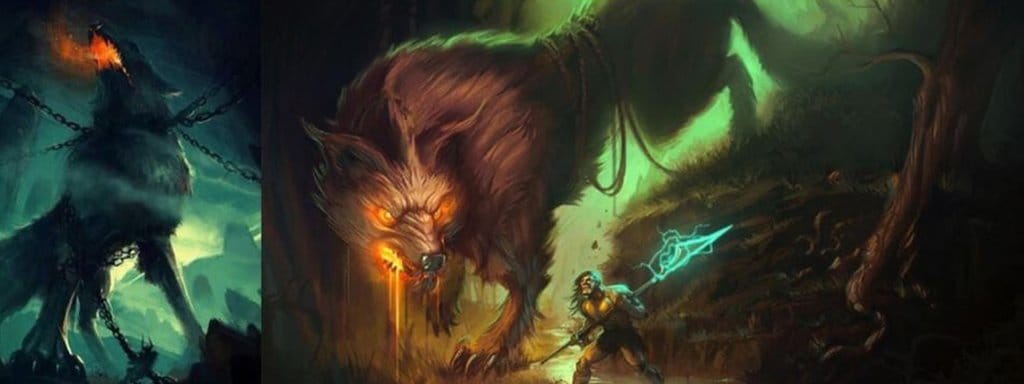
In Norse mythology, Fenrir's character is a subject of great debate, leaving many to wonder if the monstrous wolf can truly be classified as wholly good or evil. Unraveling this moral complexity, it is essential to understand Fenrir's choices, its symbolism, and the cultural significance of its actions. This discussion delves into Fenrir's duality, exploring how the mythological figure transcends the traditional binary of good and evil, and dives into the intricate layers of meaning behind its actions.
Fenrir's Duality: Protector and Destroyer
As a significant figure in Norse mythology, Fenrir embodies duality, acting as both a protector and a destroyer. In some myths, the monstrous wolf is seen as a symbol of strength, fearlessness, and loyalty, guarding those who admire and follow it. Yet, on the other hand, Fenrir is well-known for its destructive tendencies, most notably its role in the prophesied end of the world, Ragnarok.
“Fenrir is the archetype of destruction and renewal, reflecting the inevitable cycle of life and death that governs the natural world.”
The mixture of Fenrir's protective and destructive natures showcases the complex and multifaceted aspects of the wolf's character. This blending of traits defies the traditional concepts of good and evil and invites the reader to explore a deeper understanding of the moral implications behind Fenrir's actions.
Moral Complexity: Understanding Fenrir's Choices
Going beyond the surface-level interpretations of the myth, one can find deeper insights into Fenrir's actions and choices. By discovering the moral complexity of its character, readers can see that Fenrir's choices do not always align with the binary of good or evil. Instead, these decisions often reflect a more profound moral challenge faced by the wolf, and even extend to a metaphorical meaning that transcends the individual actions of the character.
One prime example of this moral complexity is the binding of Fenrir. Despite the wolf's fearsome nature and the gods' knowledge of its role in the impending Ragnarok, there is an underlying sense of betrayal and injustice within this story. It is important to question whether this act was a necessary measure, or if it reflects a deeper fear and mistrust amongst the gods that could be construed as morally ambiguous.
- The Binding of Fenrir: A display of fear and control by the gods.
- Fenrir's Role in Ragnarok: The embodiment of chaos and destruction.
- Fenrir's Protective Nature: A symbol of loyalty and strength to those who respect it.
Thus, examining Fenrir's choices and their consequences reveal the multi-layered symbolism that underlies its actions, making the wolf's character in Norse mythology rich with depth and intricacy. Through this exploration of Fenrir's duality and moral complexity, readers can gain a greater appreciation for the wolf's powerful symbolism and its lasting cultural significance, transcending the traditional notions of good and evil.
The Binding of Fenrir: Fear and Betrayal in Norse Legends
The binding of Fenrir is a pivotal event in Norse mythology that showcases the gods' apprehension of the monstrous wolf’s power and potential for devastation. The tale of Fenrir's binding not only unravels themes of fear, trust, and betrayal but also reveals the motivations and moral quandaries faced by the characters within the myth.
“As the gods gathered, they beheld the great beast, and their hearts trembled with fear. Let us bind him, lest his terrible strength bring ruin upon all the worlds.”
According to Norse legends, the gods sought to bind Fenrir as they feared the wolf's growing power and its eventual role in the Ragnarok prophecy. However, to shackle Fenrir without causing the wolf to doubt their intentions, the gods devised a cunning plan.
- They initially presented two strong chains to Fenrir, claiming these restraints would demonstrate the wolf’s mightiness by breaking them.
- Unaware of their true intentions, Fenrir agreed and successfully broke both chains.
- The gods then presented Gleipnir, a deceptively soft-looking ribbon, but Fenrir, now suspicious, refused to be bound by it without a guarantee.
- Tyr, the Norse god of War, offered his hand as insurance, signaling trust, and Fenrir was successfully restrained. However, Tyr lost his hand as Fenrir tried to break free.
Fenrir’s binding is laden with fear of Fenrir by the gods and highlights the extensive lengths they went to in a bid to contain the wolf's menacing potential. Tyr's role in this myth illuminates the significant element of mythological betrayal, deeply entrenched in Norse legends.
| Key Themes | Aspect of the Story |
|---|---|
| Fear | The gods' desire to immobilize the wolf due to their terrifyingly vivid picture of Fenrir's role in Ragnarok |
| Trust | Tyr offering his hand to Fenrir as assurance, a gesture reflecting faith in the wolf to abide by his word |
| Betrayal | Fenrir being tricked by the gods, resulting in his subsequent binding and Tyr's betrayal due to his hidden allegiance with the gods |
In essence, the tale of Fenrir's binding delves deeply into the complicated interplay between the primal powers and their subtle dynamics. Beyond showcasing how fear can provoke betrayal, it simultaneously fosters a sense of empathy for Fenrir, effectively humanizing the monstrous wolf in the readers' eyes. This story reflects not only the overarching themes within Norse mythology but also reveals the stark complexity and ambiguity of characters inhabiting these rich and intricate Norse legends.
Fenrir Rune Symbol: Unlocking the Mysteries of Ancient Runes
The enigmatic and powerful Fenrir is not only a significant figure in Norse mythology, but also holds a place within the realm of ancient runes. The Fenrir rune symbol is intrinsically tied to the wolf’s characteristics and destiny, shedding further light on its role in the Norse cultural narrative. This section delves into the meaning and interpretation of the runes associated with Fenrir, illustrating how these ancient symbols enhance our understanding of the ferocious wolf.
Runes Associated With Fenrir: Meaning and Interpretation
Several runes are often linked to Fenrir, each with its own unique meaning and symbolism. Here, we will focus on two prominent runes connected to the wolf: Tiwaz and Isa.
"Fear of the wolf was the driving force That made Hel's father cast in secret art, To strike two runes in God-council, Read clearly, but never mentioned." -Havamal, 29
The first rune associated with Fenrir is the Tiwaz rune. This rune is shaped like an arrow pointing upward and is related to the Norse god Tyr, who epitomizes bravery, honor, and justice. Tyr sacrificed his hand to bind Fenrir, an event symbolic of his dedication to maintaining balance and order. The Tiwaz rune represents this tale of courage, justice, and self-sacrifice.
| Rune | Name | Meaning | Association with Fenrir |
|---|---|---|---|
| Tiwaz | Tyr | Honor, justice, and self-sacrifice | Tyr's binding of Fenrir |
| Isa | Ice | Stillness, blockage, and restraint | Fenrir's imprisonment beneath the earth |
On the other hand, the Isa rune represents a vertical line and symbolizes ice, stillness, and the concept of blockage. This rune is associated with Fenrir due to the wolf's eventual imprisonment beneath the earth, chained and restrained with immense power. Isa encapsulates the binding force that holds Fenrir captive, waiting for the prophesied moment of Ragnarok to strike and shatter these bonds.
Understanding the significance of these runes enables us to decipher the deeper layers embedded within Fenrir's story, further illuminating the wolf's prominence in the mythological landscape.
- Tiwaz: The binding of Fenrir and the heroism of Tyr, representing honor, justice, and self-sacrifice.
- Isa: Fenrir's confinement beneath the earth, embodying stillness and restraint before the apocalyptic liberation.
In analyzing the fenrir rune symbol and its associated runes, we glean a more profound understanding of Fenrir’s mythic status – its power, restraint, and elemental fury – unlocking the mysteries embedded within ancient Norse culture.
Wolf Fenrir Representations: Iconography and Symbolism
The numerous and varied wolf Fenrir representations in art and iconography reflect the complex and multifaceted nature of this mythical creature. From ancient Norse artifacts to modern artistic interpretations, the iconography of Fenrir conveys its powerful symbolism and highlights the enduring influence of Norse mythology themes in cultural expression.
Several aspects of Fenrir have been emphasized in different representations, shedding light on its various facets. For instance, ancient Norse stone carvings typically focus on the monstrous and fearsome aspects of Fenrir, while modern artworks portray the wolf in a more nuanced light. This section discusses some notable examples of Fenrir iconography and how they contribute to our understanding of the character.
"Fenrir is the personification of uncontrolled chaos and destructive power in Norse mythology, as well as a symbol of both the wild, unruly forces of nature and the depths of human emotion unleashed."
- The Binding of Fenrir: Norse carvings and illustrations often depict the famous scene where the Aesir gods attempt to bind Fenrir using the magical ribbon Gleipnir. These representations typically present the immense wolf snarling as it is bound by the gods in order to contain its potential chaos.
- Conflict with Odin: Iconography and artworks often display the climactic encounter between Fenrir and Odin during the events of Ragnarok. This struggle between the wise god and the monstrous wolf symbolizes the eternal battle between wisdom and chaos, as well as the sacrificial aspect of Odin's character.
- Depictions as a Skoll and Hati: Fenrir is sometimes identified with Skoll and Hati, two other legendary wolves in Norse mythology that are said to swallow the sun and the moon, causing eclipses. Such depictions emphasize the destructive power of Fenrir and its associations with the end times in Norse tradition.
| Period | Medium | Description |
|---|---|---|
| Early Norse culture | Stone carvings | Carvings on runestones and other stone artifacts illustrating scenes from Norse myths, including Fenrir's binding and its encounter with Odin. |
| Later Norse and Viking culture | Wood carvings, metalwork | Ornate designs on everyday objects such as weapon handles, wooden furniture, and jewelry, often incorporating Fenrir motifs as a symbol of strength and ferocity. |
| 19th century Romanticism | Oil paintings | Evocative scenes depicting the gods and monsters of Norse mythology in dramatic and often exaggerated poses, emphasizing the romanticized view of ancient cultures. |
| Modern popular culture | Film, graphic novels, illustration | Contemporary reimaginations of Fenrir and other Norse mythological figures in a variety of mediums, often with updated visual styles and appearances. |
As we can see, the diverse wolf Fenrir representations in art and iconography provide valuable insights into the deeper meanings behind the character and its continued relevance in popular culture. Through these images, Fenrir's enigmatic nature and symbolic significance are vividly conveyed, resonating with audiences across time and cultures.
The Spiritual Significance of Fenrir in Norse Paganism
Although ancient in origin, the symbolism of Fenrir has persisted into contemporary religious practices, particularly in modern Norse paganism, such as Asatru and Heathenry. The continued relevance of Fenrir mirrors the resurgence of interest in pagan traditions, cultivating a new understanding of the wolf's spiritual significance.
Asatru and Heathenry: The Modern Relevance of Fenrir
Asatru, Heathenry, and other branches of contemporary Norse paganism recognize Fenrir's role as both a feared and respected figure. Within these belief systems, Fenrir symbolizes the innate power and raw force of nature, fostering a deep connection with the natural world and acknowledging its primal strength.
Modern worshippers of Norse deities view Fenrir as an embodiment of the chaotic forces inherent in the cosmos, recognizing that these forces are necessary for the cycles of destruction and rebirth. This renewed fascination with Fenrir highlights the importance of mythology in contemporary spiritual practices, as well as the creature's enduring symbolic significance.
Fenrir in Modern Norse Paganism: A Symbol of Spiritual Liberation
As a central figure in modern Norse paganism, Fenrir is associated with themes of spiritual liberation, transcending constraints, and struggling against oppression. The wolf's resourcefulness and indomitable spirit are admired, particularly by those seeking personal autonomy and the freedom to embrace their true selves.
Fenrir's lore is rife with symbolism; the iconic wolf helps strip away falsehoods and fears, leading us to a truer understanding of ourselves and the world around us.
The spiritual liberation attributed to Fenrir's symbolism resonates with those on a quest for personal freedom and self-discovery. Guided by this mythic figure, adherents of modern Norse paganism often aim to break free from societal expectations and forge their own paths.
This contemporary take on Fenrir's symbolic interpretation affirms the adaptiveness of mythology, demonstrating that ancient tales continue to inspire and shape human experience across time and culture.
Legacy of Fenrir in Art and Literature
The legacy of Fenrir in art and literature is undeniably strong and extensive, as the fearsome wolf's symbolism and imagery have been employed in various forms of cultural expressions, largely due to its rich mythological roots and its emotionally charged character. This section will discuss renowned examples that demonstrate Fenrir's lasting impact on artistic and literary works, highlighting the myriad ways in which this mythical figure has been reimagined and interpreted over the centuries.
One of the earliest representations of Fenrir in visual arts can be seen in the ancient and historic Gosforth Cross, originating from the 10th century. The intricate stone-carving portrays the legendary battle between Fenrir and Odin during Ragnarok, effectively capturing the gripping tension and fierce emotions associated with the event.
Additionally, in literary works, Fenrir appears frequently in various forms, such as in poems, sagas, and more modern novels. For instance, the Poetic Edda, a collection of ancient Norse poems, features several references to Fenrir and his role in Ragnarok. This seminal work of literature is an essential source of the Norse myths, making its depictions of Fenrir both timeless and influential.
Bound I see the monster, Fenrir, son of Loki, Gnawing off Gnipahellir, growing relentless; Broken free, the ravenous beast from his bondage, Unleashed, Odin's bane, his prophecy come.
Moving forward to the 20th century, Fenrir's legacy remains evident in contemporary art and literature. In a modern reinterpretation, J.R.R. Tolkien incorporated aspects of Fenrir's story into his famous novel, The Lord of the Rings, where the monstrous wolf Carcharoth, the guardian of the entrance to Morgoth's realm, is reminiscent of Fenrir in many aspects, including its catastrophic impact on his surroundings.
| Artwork/Literature | Creator | Date | Description |
|---|---|---|---|
| Gosforth Cross | 10th-century Viking carvers | c. 940-950 C.E. | Depicts the battle between Fenrir and Odin during Ragnarok |
| Poetic Edda | Various Old Norse poets | c. 13th century C.E. | Collection of ancient Norse poems featuring Fenrir in several verses |
| The Lord of the Rings | J.R.R. Tolkien | 1954-1955 | Incorporates a Fenrir-inspired character, Carcharoth, as a central figure in the epic story |
In conclusion, with the enduring legacy of Fenrir in art and literature, it is apparent that the mythological wolf's powerful symbolism and evocative story continue to captivate and inspire creators across multiple disciplines. As time progresses, the representations of Fenrir in literature and art will likely persist in adapting and evolving, embodying the mutable and timeless characteristics inherent in mythology itself.
Fenrir Symbol in Modern Culture: From Tattoo to Pop Media
The Fenrir symbol has infiltrated various aspects of modern culture, from tattoos to popular media. This widespread adoption can be attributed to its rich, symbolic qualities that resonate with people across the globe. Here, we explore the presence of Fenrir in different realms of popular culture, examining its versatility as a visual and thematic element.
"The monstrous wolf of Norse Mythology has left an indelible mark in the hearts and minds of people, transcending time and geographical boundaries."
Fenrir Tattoos
Fenrir continues to be a popular choice as a tattoo motif, with its intricate imagery and powerful symbolism. People are drawn to the idea of adornment with Fenrir tattoos as a representation of strength, resilience, or even personal freedom. In some circles, it serves as a spiritual emblem or a token of defiance against oppressive forces.
Pop Media Representations
Pop media has also adopted Fenrir as a character or inspiration in various forms like film, television, and literature. For example, the popular HBO series Game of Thrones showcased an enormous direwolf named Ghost, evoking similar themes of strength, loyalty, and resilience associated with Fenrir. The world of literature has seen books like An Echo of Things to Come by James Islington, which prominently features wolves as a symbol of unity against impending chaos.
Fenrir Associations and Subcultures
With an enduring appeal spanning centuries, the Fenrir symbol has found a place within various subcultures and mainstream connections. Recognizing its versatility and broad range of meanings, people from different walks of life have embraced the powerful presence of Fenrir within their expressive domains.
The following table presents a brief overview of where Fenrir's symbolism is seen in modern culture:
| Medium | Examples |
|---|---|
| Tattoos | Popular for tribal and Norse-inspired tattoos, representing strength, defiance, or freedom. |
| Film & Television | Game of Thrones (HBO), Vikings (History Channel), Norsemen (Netflix) |
| Literature | An Echo of Things to Come (James Islington), The Gospel of Loki (Joanne M. Harris) |
| Subcultures | Asatru, Heathenry, heavy metal music, fantasy gaming communities |
In conclusion, Fenrir's symbolism remains a potent force in popular culture, transcending the boundaries of time and geography. Its iconic presence in tattoos, pop media, and subcultures showcases the enduring elemental power of Fenrir and its ability to inspire awe and fascination in the hearts and minds of generations to come.
Interpretations of Fenrir's Symbolism Across Time and Cultures
Over the centuries, the interpretations of the Fenrir symbol have evolved in response to the changing contexts and cultural landscapes. Through these interpretations, we can gain a deeper understanding of the significance of Fenrir in Norse mythology and its cultural impact across different eras and societies. This section will discuss the various cultural interpretations, and how they align with or diverge from the traditional Norse perspectives, shedding light on Fenrir's universal and unique symbolism.
"Fenrir has become a symbol of untamed and unpredictable power, a force that is both revered and feared throughout history and across cultures."
The following table outlines different cultural interpretations of Fenrir across time and societies:
| Time Period | Culture | Interpretation of Fenrir |
|---|---|---|
| 10th-13th Centuries CE | Scandinavian | Fenrir represents chaos, destruction, and the end of the world in Norse mythology. |
| 19th Century CE | British Romanticism | Inspired by the rediscovery of Norse myths, Fenrir symbolized the untamed forces of nature and the struggle against societal constraints. |
| 20th-21st Centuries CE | Modern Paganism | Fenrir has taken on new meanings as a symbol of spiritual liberation, defiance against authority, and breaking free from self-imposed limitations. |
A striking example of Fenrir's influence on non-Scandinavian art can be found in the works of the British Romantic poets of the 19th century, such as William Blake and Percy Bysshe Shelley. They viewed Fenrir as a representation of the untamed forces of nature, mirroring the wild, creative power of imagination that they championed. The destructive and chaotic aspects of the monster were thus embraced as expressions of individualism and defiance against societal norms.
In more recent times, Fenrir's symbolism has infiltrated modern pagan practices, such as Asatru and Heathenry. In these spiritual movements, Fenrir is often seen as a symbol of liberation and empowerment. The wolf's defiance against the gods and its pursuit of freedom represent the struggle to break free from external and internal limitations. Followers of modern Norse paganism often celebrate the metaphorical power inherent in Fenrir's myth, where the wolf's destructive tendencies are now perceived as necessary forces of transformation and growth.
- Traditional Norse Interpretation: Focuses on Fenrir as a symbol of chaos, destruction, and the end of the world.
- Romanticism: Fenrir represents the untamed forces of nature and the struggle against societal constraints.
- Modern Paganism: Emphasizes the spiritual liberation and defiance against authority, transforming the destructive aspects of Fenrir's myth into a positive force for personal growth.
By examining the various interpretations of Fenrir's symbolism throughout history and across cultures, we gain valuable insights into the shifting meanings and significance of this iconic mythical figure. The complex layers of Fenrir's character offer a timeless and universal appeal, providing an enduring legacy that continues to inspire and captivate generations of readers, artists, and spiritual seekers. As a symbol of both destruction and liberation, Fenrir has become a potent reminder of the raw, untamed power that lies within each of us, guiding us on a journey of self-discovery, transformation, and ultimately, freedom.
Conclusion
The exploration of Fenrir's symbolism reveals a complex and multifaceted character, encompassing dualities and themes that have captivated generations. Fenrir's role in Norse mythology not only represents the wolf's destructive nature but also sheds light on its protective qualities, thereby challenging binary classifications of good and evil. With multi-layered themes such as struggle, power, and liberation, Fenrir's story encourages a deeper understanding and appreciation of mythology as an inspiration for human endeavors and growth.
Across history and cultures, Fenrir's symbolism has extended its reach and influence in art, literature, spiritual traditions, and modern popular culture. It is through these various expressions that the meaning of Fenrir and the question of "what does Fenrir symbolize" is continuously re-imagined and engaged with. By combining these perspectives, Fenrir's symbolism transcends its original context and acquires universal relevance, creating an enduring legacy that connects people across boundaries.
In conclusion, the wealth of interpretations and associations surrounding Fenrir propels us to reflect and explore our own beliefs, struggles, and aspirations. The inspirational perspective offered through the study of Fenrir's symbolism exemplifies the power of mythic symbols to shape and influence human culture across time, preserving the past while nurturing growth and creativity in the present and future.
FAQ
Who is Fenrir in Norse mythology?
Fenrir is a monstrous wolf, a feared and powerful creature born to the trickster god Loki and the giantess Angrboða. Fenrir plays a significant role in Norse mythology, particularly in the foretold end-of-the-world event known as Ragnarok.
What does Fenrir symbolize in Norse mythology?
Fenrir symbolizes a complex mix of themes like strength, chaos, and natural forces. As a creature associated with the end of the world, Fenrir is considered an emblem of destruction and change. However, the wolf's character contains duality, as it can also represent protection and resistance against oppression.
How does Fenrir connect with other characters in Norse mythology?
Fenrir is one of Loki and Angrboða's three children, alongside Jormungandr and Hel. These siblings share a unique heritage, connecting them to the intricate network of relationships among deities and mythological creatures within Norse pantheon.
What is Fenrir's role in the Ragnarok prophecy?
In the Ragnarok prophecy, Fenrir is a harbinger of destruction and the end of the world. With its escape and subsequent actions, Fenrir's role in Ragnarok is pivotal to the prophecy's fulfillment.
Is Fenrir considered good or evil in Norse mythology?
The portrayal of Fenrir in Norse mythology transcends the binary of good and evil. While the wolf has destructive tendencies, it also reveals protective aspects in some myths. Understanding the moral complexity of Fenrir's character and choices adds depth to the discussion of its role in Norse myths.
What is the significance of the binding of Fenrir in Norse legends?
The binding of Fenrir is a crucial event in Norse myths that highlights themes of fear, trust, and betrayal. The gods' reaction to Fenrir's increasing power and their subsequent decision to bind the monstrous wolf reveal their motivations and moral quandaries.
Are there specific runes associated with Fenrir?
Yes, there are runes associated with Fenrir that provide insights into its place in Norse culture. These ancient symbols convey the characteristics and destiny of Fenrir, adding to the understanding of the wolf's role and meaning in mythology.
How does Fenrir relate to modern Norse paganism and spiritual beliefs?
Fenrir has contemporary relevance in modern Norse paganism, such as Asatru and Heathenry. The wolf symbolizes themes of spiritual liberation, breaking free from constraints, and resistance against oppression.
How has Fenrir's symbolism influenced art, literature, and popular culture?
Fenrir's imagery and symbolism have been utilized in various cultural expressions, such as art, literature, tattoos, films, and television. The widespread adoption of Fenrir as a visual and thematic element reflects the mythological figure's enduring legacy and resonance across time and cultures.
